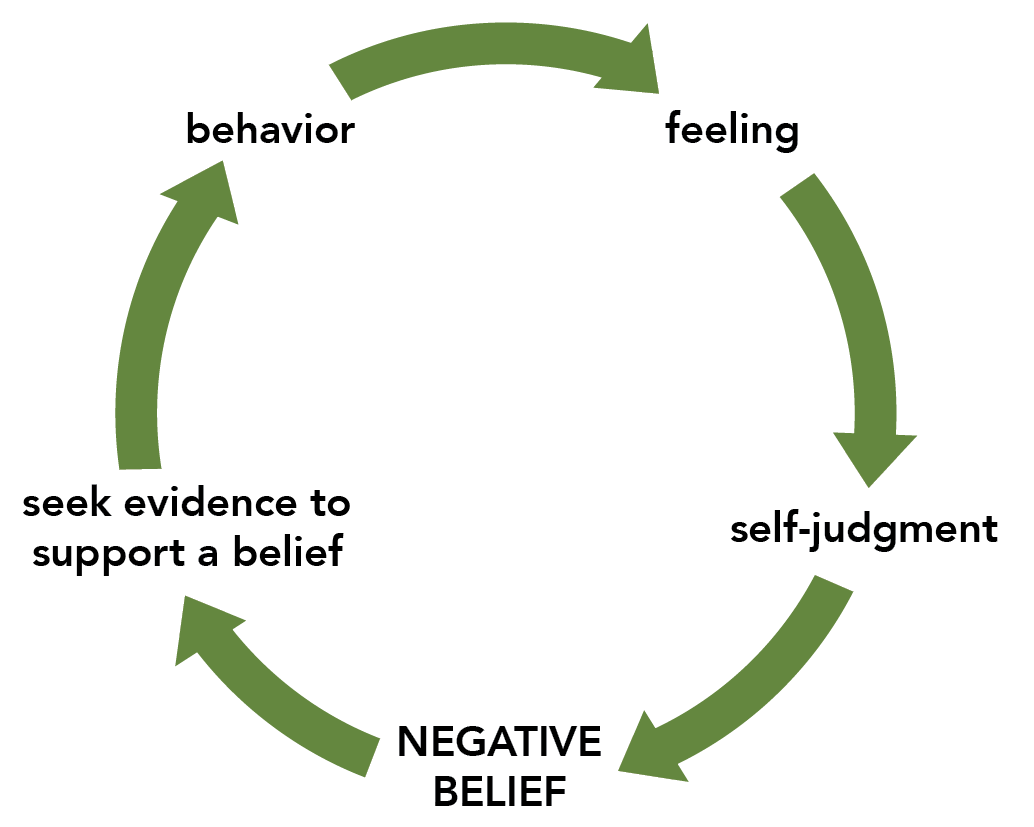|
By Anne Andrew PhD Children develop negative beliefs about themselves between birth and age 6 or 7, which unchecked can lead to negative behaviors such as addiction, bullying and depression. These negative beliefs make up the person they think they are. How do negative beliefs get started? When I was four or five, I was on a summer holiday on the coast, with my mom and dad and my brother. This particular day, we were taken to the dock where there was a great big wooden galleon. I could hardly believe my luck that we were going to go on board and sail away! I held tightly onto my mom’s hand as we climbed the steep gangplank and the sailor at the top helped me jump down onto the deck. When all the passengers had assembled, the captain told us, “Welcome to the Hispaniola! We’ll be heading to Treasure Island, where there are gold coins buried somewhere beneath the sand.” Off we sailed and soon Treasure Island came into view. The ship docked and we disembarked down the same wooden gangplank onto a white sandy beach. My brother and I began digging with our hands in the fine sand. I was deeply engrossed in hunting for the treasure when, all of a sudden, three men jumped out of the bushes beside the beach - pirates - and they were pointing their guns at us! Well, I was terrified, and my hands flew into the air. Everyone started to laugh. I looked around and realized that I was the only one with my hands up and all the people on the beach were looking at me, laughing. I grabbed hold of my Mom’s legs, moved round behind her and hid, burying my face in the folds of her skirts, wanting to become invisible. A feeling of acute embarrassment engulfed me - how could I have been so stupid as to think the pirates were real? As a result of this incident “I’m stupid” became one of my negative beliefs. I carried that around with me for nearly forty years! This particular example illustrates a couple of key points:
In this diagram, the feeling I had when people were laughing at me was one of acute embarrassment. The self-judgement was “I must be stupid”. My reasoning was “who could love a stupid girl? I must also be unlovable”. “I’m unlovable” became a core belief. With that belief firmly in place, I then sought evidence that the belief was true. That wasn’t hard to find – I’d notice any time my parents acted in an angry way, but failed to notice all the times love predominated. I would also act in ways that would bring proof of being stupid, and which would give me a feeling of acute embarrassment – a familiar feeling throughout my life. Now, if I feel embarrassed, I immediately know that it is because my core belief has been triggered and I can simply remind myself that it is not true and then the feeling will fade away.
The diagram shows that if we want to change a behavior pattern, we must change the core belief that is driving that behavior – this is a completely different approach than behavior modification and other methods that focus on behavioral symptoms, rather than on the cause. Negative beliefs form in early childhood (from birth to age 6 or 7) at the stage of life in which children are egocentric (Piaget). Children try to understand the world from an egocentric standpoint so they deduce that they are responsible for the things that happen around them and they will make up beliefs about themselves to explain events. Your children are developing negative beliefs about themselves as they experience life, as they interact with family and friends, teachers and coaches. They may already believe subconsciously that they are bad, stupid, guilty, worthless, that there is something wrong with them and that they are therefore, unlovable – that’s who they think they are. My own daughter developed strong negative beliefs that led to eating disorders and other self-harming behavior. One of the formative experiences for her was the time I was late picking her up from ballet. I had fallen asleep after dropping her off for her preschool ballet class, and I didn’t wake up till the phone rang and it was the ballet teacher asking me to come and pick her up! Of course, my daughter was distraught by the time I got there and she had the thought that she must be worthless or her mother would have picked her up on time. In subsequent years, her recurring self-talk was fed by the belief “I’m worthless”, based on that memory of me being late picking her up from ballet. Dr. Joe Dispenza in his book ‘You are the Placebo’ suggests that these beliefs are hardwired into the brain by this process of repeating thought patterns. “Because experiences are neurologically etched into your brain (causing you to think) and chemically embodied as emotions (causing you to feel), most of your beliefs are based on past memories.” He also shows that due to neuroplasticity, the brain can regenerate and change these neural pathways if thoughts are changed at their source. So how can we help our children to change the messages they give themselves and break out of these negative thought patterns? Our healing journey led us to discover the benefits of the Choose Again methodology, which is how we both discovered these triggering memories (my pirates and her late-arriving mother), and many others. Applying a process known as the Choose Again Six-Step Process, a little known, but extremely effective way of finding and challenging negative beliefs. This process involves following recurring feelings (the ones we are addicted to) into early childhood memories and discovering the judgments about ourselves we made in those events. These become our negative beliefs. The final step is to replace the negative belief with a solid understanding that each of us has intrinsic worth. The concept of having Inherent Worth is therefore the antidote to any negative belief that you or your children may have. If understanding that our worth is inherent is the key to recovery, as I witnessed it to be through the Choose Again Attitudinal Healing center in Costa Rica and healing circles and workshops in Vancouver and around the world, then it must also be the key to prevention. That’s why I have built a parenting coaching practice around helping parents to raise their children’s awareness that their worth is inherent. Children who have an awareness that they have Inherent Worth will be:
Here are five ways to help your child discover his / her Inherent Worth: 1 - Have a gratitude practice. Decide to have a gratitude practice as a family – will this be once a week or daily? After school or at bed time? In the car or at dinner? Will you start at Thanksgiving or right away? Pick out a beautiful journal to record your family’s expressions of gratitude.I have found through years of leading gratitude circles with school age children that at first children will offer gratitude for the things they think they want me to hear – family, friends, the world. However, if the adult starts out with a much more specific gratitude such as “I’m grateful for the shape of the leaf that landed on the garden path this morning” or “I’m grateful that the person who helped me to the car with my groceries was so cheerful and chatty”, then the examples of the children will become more specific and they will see the world differently and focus on things that may otherwise go unnoticed. Gratitude has been shown to enhance happiness in many studies such as Harvard Health
2 - Meditation or Mindfulness. Having a meditation or mindfulness practice is a way of helping children to see that thoughts come and go and that they can choose their thoughts – their thoughts do not have to control them. Meditation helps them to go inwards to find the source of peace and strength – it puts them in touch with the part of them that is inherently worthy. Google ‘Meditation for children’ and find a website or CD that works for your family. It is important for you to have your own meditation or mindfulness practice as well to set the example. I know it can seem as if there aren’t enough hours in the day to do this, but being mindful while washing dishes or eating dinner can be helpful in demonstrating the power of our minds. 3 - Respect Others. We teach best by example, so if you want your child to be sure of her own Inherent Worth, you must never belittle anyone but always show respect – no exceptions! If you don’t, your child will notice and entertain doubts about her worth. Own your inherent worth! It is important for parents to understand this themselves before they are really able to help their children to own theirs. Find and fix your own negative beliefs. To do this you may need to visit the Choose Again website and check out the video of the staff explaining the six-step process. This takes some practice and discipline but is life-enhancing in so many ways. 4 - Smile. A smile is the simplest gift of love that you can give and one of the most profound ways to acknowledge the worthiness of everyone. Flash your biggest brightest smile at your children, spouse, co-workers and anyone else you meet today – check in with how that feels. Put a smiley face sticker on your cell phone as a reminder. As Rebbe Nachman of Breslov said “Smile at everyone – the gift of life is then yours to give”. 5 - Listen well. Once or twice a day, listen to your child with your full attention, making eye contact and be sure your cell phone is OFF. Deep listening is a way of acknowledging the Inherent Worth of another in a way that they can feel it. Don’t feed a child’s negative beliefs by only half listening while checking your cell phone. Studies have shown that children of parents who are addicted to their cell phones believe they are unimportant. Negative beliefs are much more powerful influences in our lives than we realize, and they need to be taken seriously by anyone who chooses to improve their sense of well-being and ensure that their children grow up mentally-healthy. Summary:
0 Comments
Leave a Reply. |
Author I know firsthand the emotional and financial costs of having a troubled teenager and I don’t want that to happen to you. That's why I wrote my book What They Don't Teach in Prenatal Class: The Key to Raising Trouble-Free Kids and Teens (available on Amazon). Archives
April 2022
Categories
All
|
get in touch
Email: [email protected] Tel: (1) 604 720 2776
Sign Up to my newsletter
Get information and articles about how to raise happy, mentally-healthy, and addiction-free kids!



 RSS Feed
RSS Feed